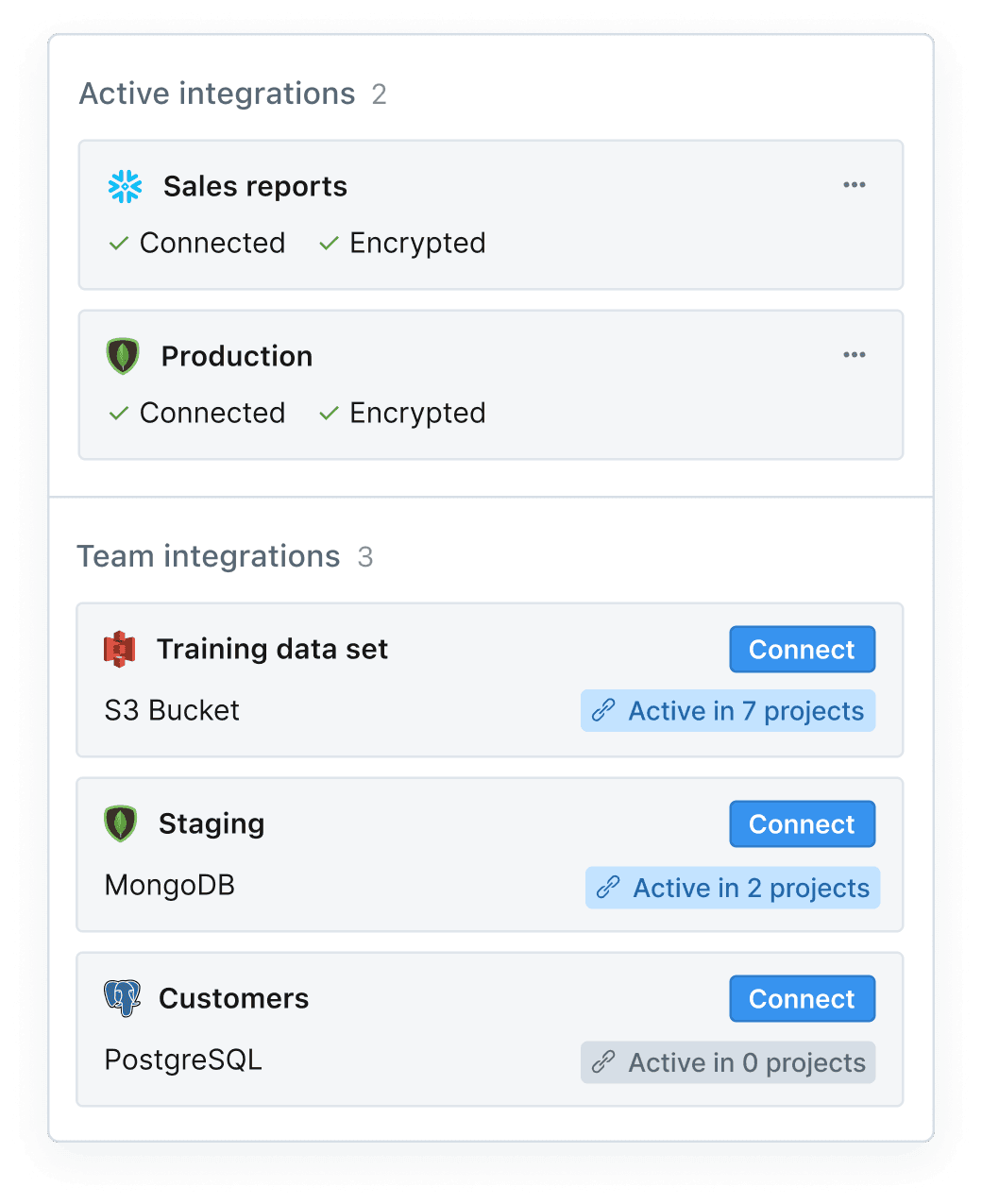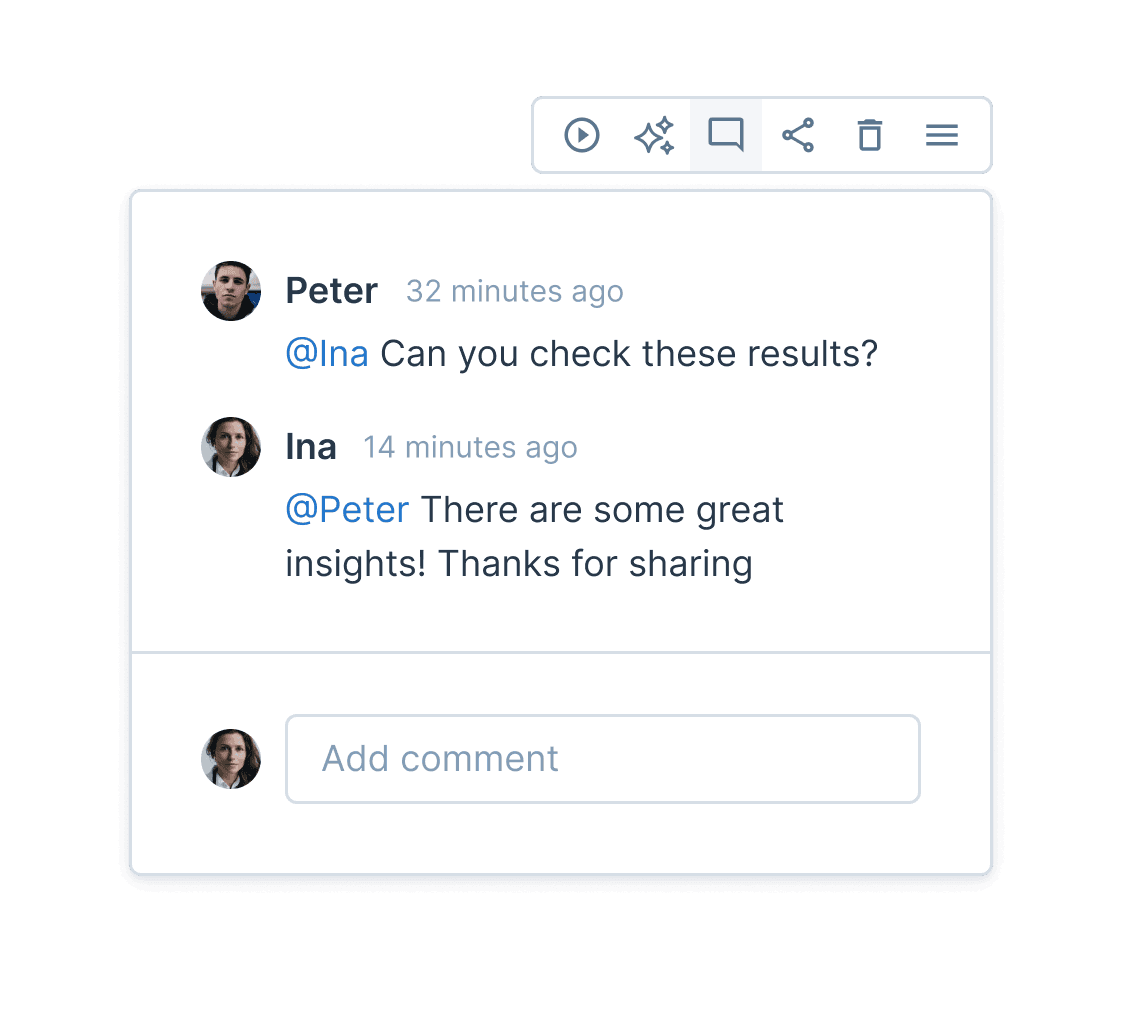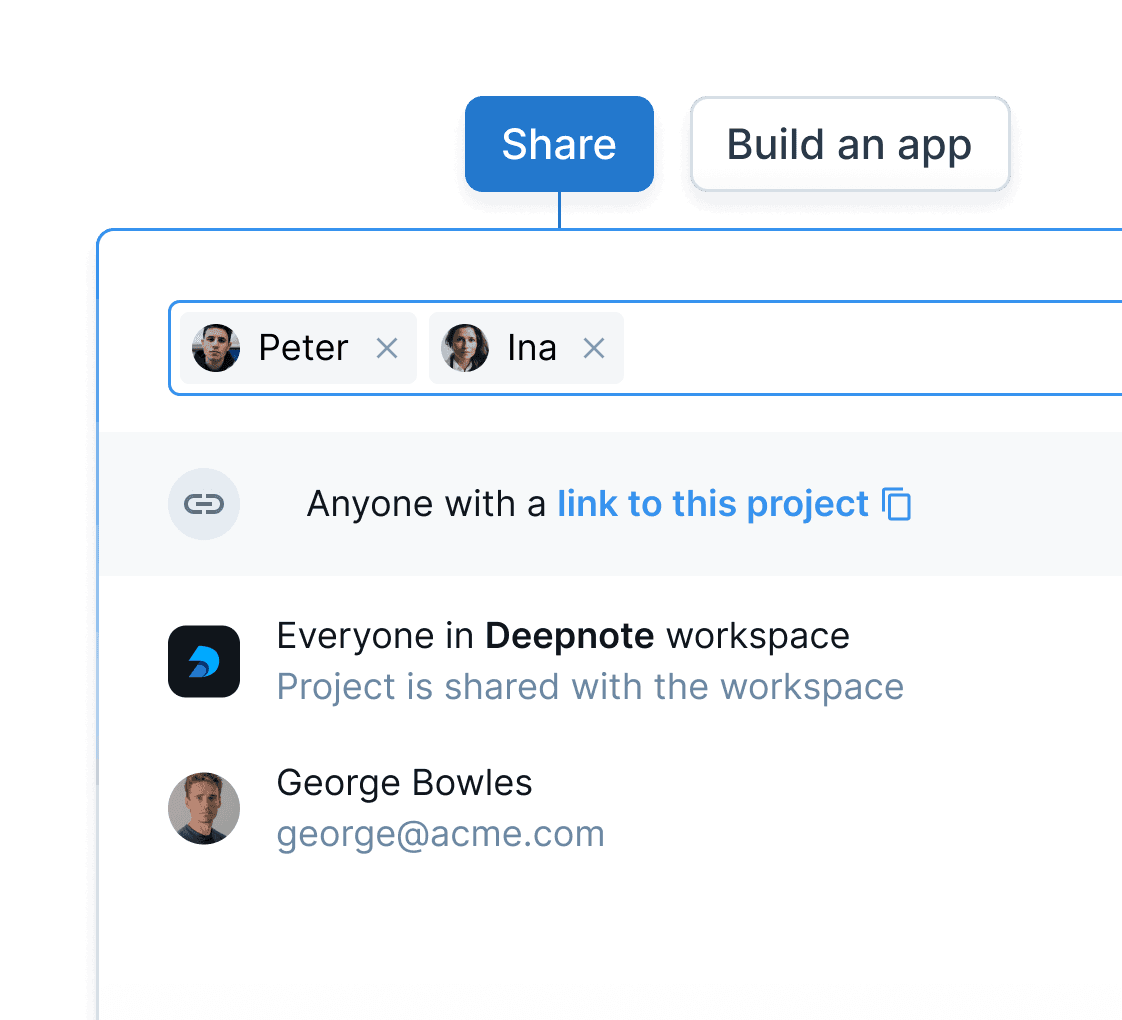Product manager

Mount an AWS S3 bucket into your notebook and browse files just like do on your computer. You can read, write, update or delete any data.
Loved by 100,000s of data professionals
With Amazon S3 you can easily store any object in the cloud.
When connected to a Deepnote notebook, the bucket will be mounted along with the notebook's filesystem. Then you can easily reference, upload, delete or update any file that lives in the bucket. S3 can be used to store large datasets that will serve as inputs to training or analysis, or you can directly save there the outputs of your work.

Deepnote runs seamlessly in the cloud, making environment management and collaboration with your team a non-issue. And sharing work is as easy as sending a link or email invite.
Product manager



Data scientist
Deepnote works with the tools and frameworks you’re already using and familiar with. Use Python, SQL, R, TensorFlow, PyTorch, and any of your favorite languages or frameworks. Easily connect to data sources with dozens of native integrations.
Browse integrations →